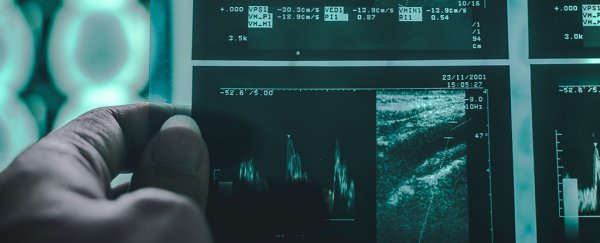A literature study from last year on medical care in the US has put forward ten diagnostic procedures and treatments that were overused in 2016, with the intention of highlighting ways that the medical system could be made more effective and more efficient.
While doctors do a smashing job with often very limited resources, sometimes striking a balance between time and costs means pills and procedures get prescribed without the patient's best interests in mind.
"Too often, health care practitioners do not rely on the latest evidence and their patients don't get the best care," says researcher Daniel Morgan from the University of Maryland's School of Medicine.
"Hopefully this study will spread the word about the most overused tests and treatments."
The team dug through journal articles in the PubMed archive, using search terms such as overuse, overtreatment, inappropriate, and unnecessary.
The team considered 2,252 papers, of which 1,224 addressed the overuse of medicine directly.
Specifically, the papers reported on "care in which potential harms outweigh potential benefits."
These were further whittled to 122 papers which were identified as significant. The researchers then agreed on their following 'top ten'.
None of these results should be taken to mean these tests and procedures are to be avoided. It's about being sure that there's a good reason based on your situation for the specific procedure to be prescribed.
We're not medical professionals ourselves, so our best advice is – as always – don't be afraid to ask your doctor for more information.
Transesophageal echocardiography
In simple terms, this procedure takes pictures of your heart using ultrasound via a tube inserted into your oesophagus. A doctor might use this instead of doing an electrocardiogram, but research suggests any extra detail it might produce isn't worth the risks of being sedated.
Computed tomography pulmonary angiography
A diagnostic test that images the pulmonary arteries in patients with respiratory symptoms using a CT scan. It isn't invasive, and is highly sensitive, but hits the patient with a dose of radiation. The wait for this test is likely to result in delays that raise the risk of complications developing.
Computed tomography in any patients with respiratory symptoms
Any kind of CT scan on a patient with non-life threatening respiratory symptoms, according to the study, does little to improve the patient's outcome. Worse still, these scans raise risks of false positives, where the test indicates a non-existent pathology.
Carotid artery ultrasonography and stenting
Carotid ultrasounds are done to test the width of arteries at the neck, which could help indicate risk of stroke.
Early diagnosis can be a life saver, but the researchers found 9 out of 10 tests being done on asymptomatic patients that resulted in an artery-widening 'stent' being inserted were done on inappropriate grounds.
Since stents require surgery, it's likely a number of these are inflating risk unnecessarily.
Aggressive management of prostate cancer
Prostate cancer is another condition that can be treated easily if found early.
A blood test for markers called prostate antigens can do that, but it's hard to tell if they're produced by an aggressive tumour that needs to be dealt with or a slow growing one that the patient can take to their grave in years to come.
Just 1 percent of men who had their prostate removed – risking the complications that go with that – died of the cancer. Of those who kept their prostate? About the same.
Supplemental oxygen for patients with chronic obstructive pulmonary disease
Giving more oxygen to patients with the lung illness COPD didn't help their lungs work better or improve their wellbeing. But it can cause them to retain carbon dioxide. Which isn't good.
Surgery for meniscal cartilage tears
Ripping the C-shaped shock-absorbing discs of cartilage inside your knee is no laughing matter. But going to the trouble of repairing it surgically was found to have few benefits that couldn't be achieved through conservative management and rehabilitation.
Nutritional support in medical inpatients
Overall, malnutrition doesn't do a patient much good. On the other hand, giving nutritional support to critically ill patients made no difference in terms of hospital stay or mortality, even if it helped them put on weight.
In the event of failing organs or metabolic complications, that support might carry risks that aren't balanced by benefits.
Use of antibiotics
A 2016 study estimated 506 prescriptions were being written in 2010 to 2011 for every 1000 people. Only 353 could be considered appropriate.
The CDC's National Action Plan for Combating Antibiotic-Resistant Bacteria aims to reduce inappropriate outpatient antibiotic use by 50 percent within the next few years.
The researchers noted that of the measures in this plan, the most effective was to use social pressures, encouraging doctors to take note of good prescription practices among their colleagues.
Use of cardiac imaging
Cardiac imaging for patients with chest pain was found to have tripled over the past decade, while doing nothing for low-risk patients. This risks leading to unnecessary hospital stays and interventions.
The solution? According to the researchers, doctors should share decision making with their patient.
Research that takes a critical look at how professionals deliver medical care is important for maintaining high standards with available resources.
This research was published in JAMA Internal Medicine.
An earlier version of this article was published in October 2017.
